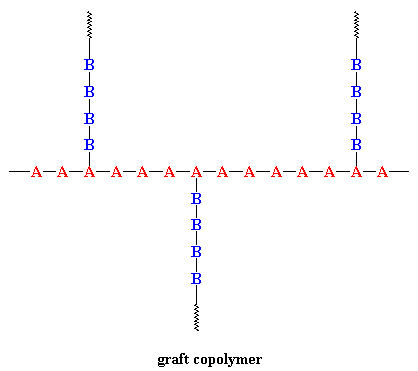

When the two monomers are arranged in an alternating fashion, the polymer is called, of course, an alternating copolymer:

In a random copolymer, the two monomers may follow in any order:

In a block copolymer, all of one type of monomer are grouped together, and all of the other are grouped together. A block copolymer can be thought of as two homopolymers joined together at the ends:
A block copolymer that you know very well, that is, if you wear shoes, is SBS rubber. It's used for the soles of shoes and for tire treads, too.
When chains of a polymer made of monomer B are grafted onto a polymer chain of monomer A we have a graft copolymer:
One kind of graft copolymer is high-impact polystyrene, or HIPS for short. It's a polystyrene backbone with chains of polybutadiene grafted onto the backbone. The polystyrene gives the material strength, but the rubbery polybutadiene chains give it resilience to make it less brittle.



|
Return to Level Three Directory |

|
Return to Macrogalleria Directory |
